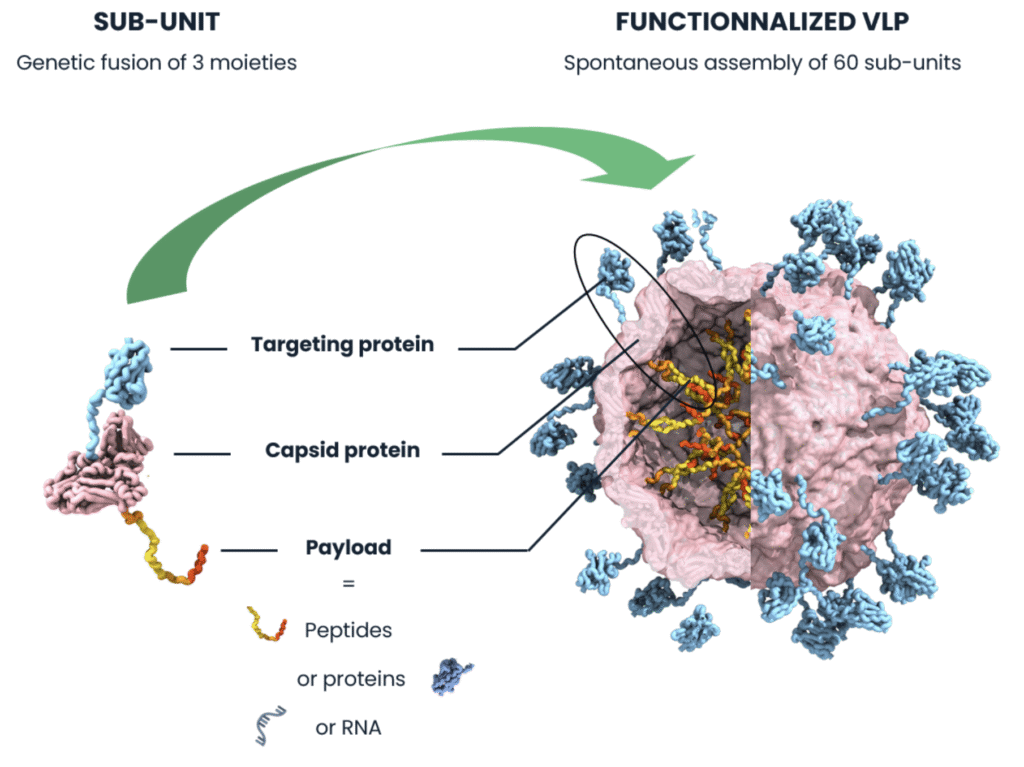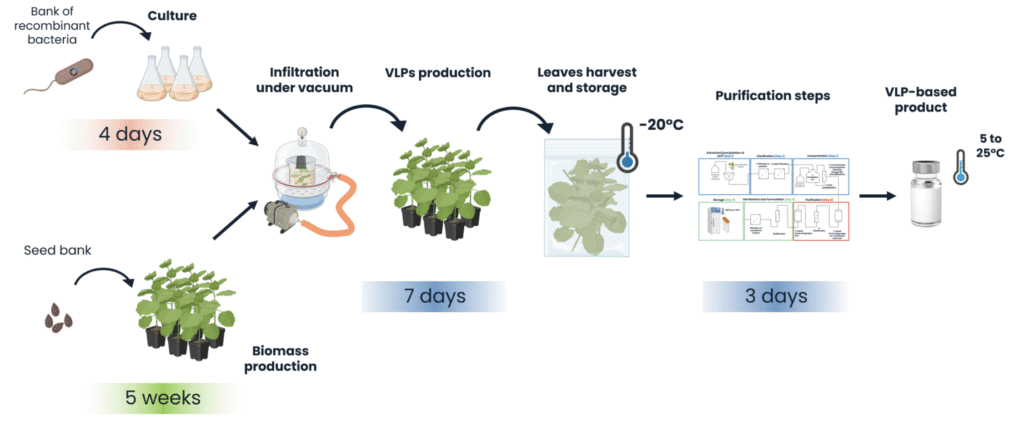Platform
An innovative technology
The technology is based on a highly modular nanocarrier derived from a plant virus. Its capsid is repurposed for the transport and targeted delivery of molecules, offering a unique advantage among nanoparticles known as Virus-Like Particles (VLPs).
The first VLP developed originates from the Grapevine Fanleaf Virus (GFLV) and is exclusively licensed from the CNRS. Additional VLPs are currently under development.
This specific VLP stands out for its exceptional properties: it is up to 20 times less immunogenic than conventional VLPs, remains stable for 4 years at 5°C or even at room temperature, and enables simultaneous cargo loading and surface display, essential for combining targeting surface proteins with various molecular payloads (proteins, peptides, RNA).
The patents cover all surface modifications (inner and outer) by genetic fusion of the capsid protein or even mediated by antibody fragments recognizing specifically VLP surface epitopes.


Antibody fragments development
The team has strong expertise in engineering antibody fragments specifically tailored to biological targets.
To date, up to 10 distinct antibody fragments have been successfully displayed on the surface of our VLPs, enabling 10 different modes of action. For several of these antibody fragments, target binding and specific delivery have been successfully validated.
A plant-based screening and
production of drug candidates

The gene encoding the engineered capsid protein is introduced into Agrobacterium tumefaciens, which is then used to infiltrate plant leaves. The bacteria infect the leaves, triggering the expression of the VLP subunits, each containing three functional moieties, that self-assemble into the final functionalized VLP. Payloads and targeting proteins are co-expressed during this step, eliminating the need for additional formulation to load active molecules.
The process allows for long-term storage: leaves can be frozen for years prior to purification, or the purified VLPs can be stored in solution.
From gene design to the final formulated VLP-based product, the full manufacturing cycle takes approximately 6 to 8 weeks and relies on simple, cost-effective raw materials.
Prior to full-scale production, a screening process is conducted to identify the most promising VLP-based candidate based on expression yield and complete particle assembly. This screening requires only a few leaves per candidate and is completed within approximately 4 weeks.
At this stage, various VLP constructs can be shortlisted by optimizing codon usage for the partner’s protein, exploring different VLP backbones, and testing alternative expression strategies (in different subcellular compartment).

